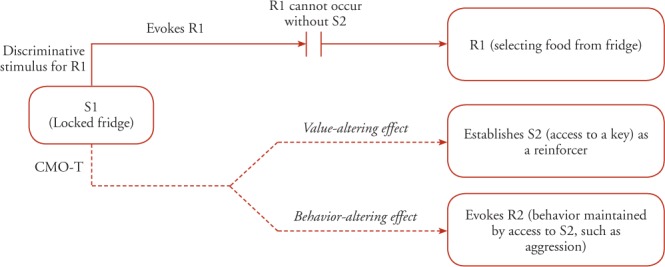Figure 4.

Depiction of the CMO-T relation (Adapted from Michael, 1982, p. 152). An ongoing response (such as selecting food from a refrigerator) is blocked (by the presence of a lock on the refrigerator). The initial stimulus change, which would normally function as a discriminative stimulus for the now blocked response (such as the sight of the locked refrigerator), instead functions as a CMO-T. It establishes the reinforcing value of a second stimulus change (such as getting the key for the refrigerator). This CMO-T evokes a second response that has been effective in achieving this second stimulus change in the past (such as aggression). The CMO-T is conditional and would only be expected to exert any influence when an EO is in effect for the terminal response (such as when the person is ‘hungry’).
